Incident Media Photographs
Could not determine your location.
Photographs Gallery
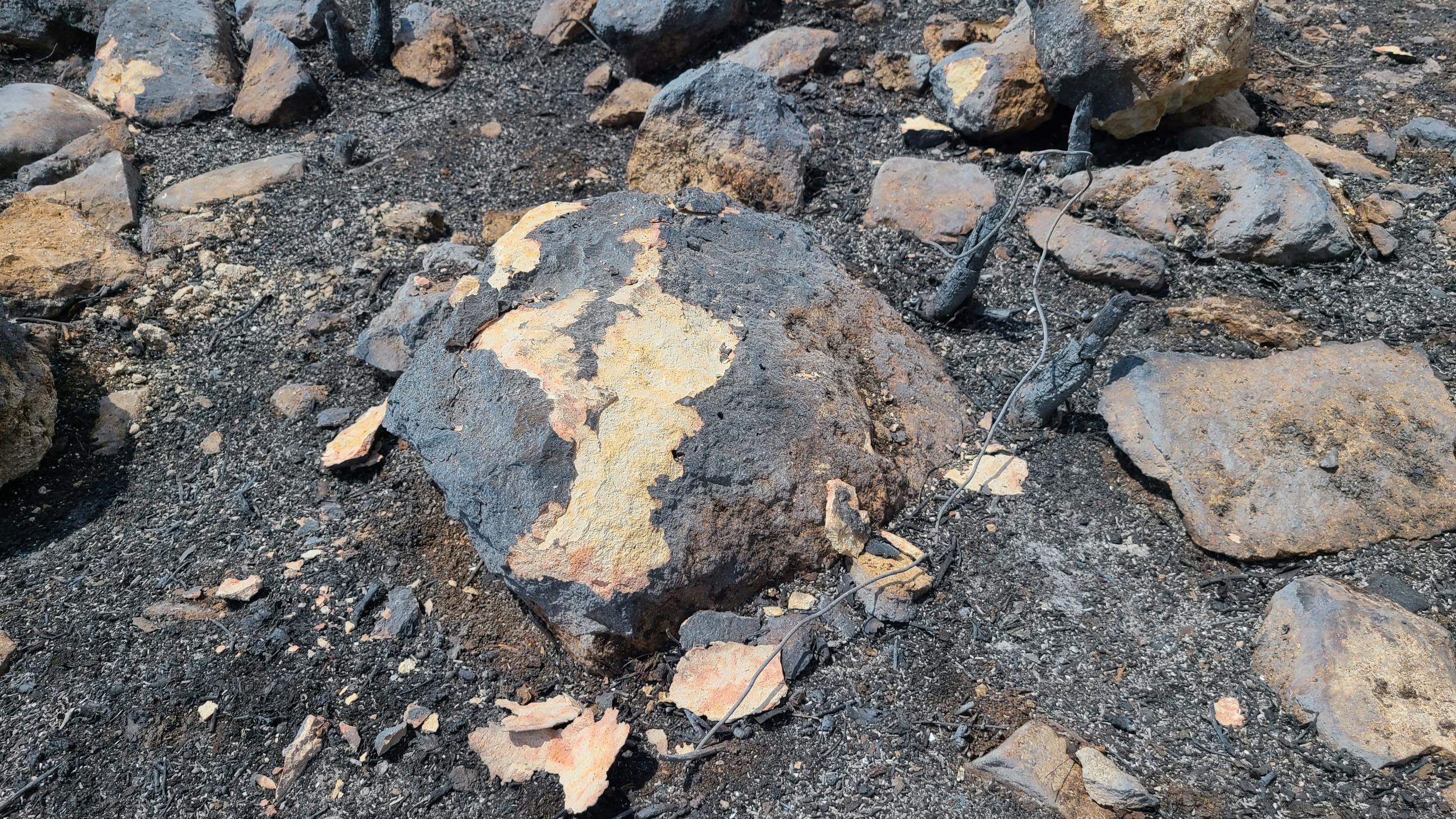
"Exfoliation (or onion skin weathering) is the gradual removing of spall due to the cyclic increase and decrease in the temperature of the surface layers of the rock. Rocks do not conduct heat well, so when they are exposed to extreme heat, the outermost layer becomes much hotter than the rock underneath causing differential thermal expansion. This differential expansion causes sub-surface shear stress, in turn causing spalling. Extreme temperature change, such as forest fires, can also cause spalling of rock. This mechanism of weathering causes the outer surface of the rock to fall off in thin fragments, sheets or flakes, hence the name exfoliation or onion skin weathering."
Spall. (2023, August 8). In Wikipedia. https://en.wikipedia.org/wiki/Spall
Below is a link to an interesting article on spalling rock following the bush fires in Australia.
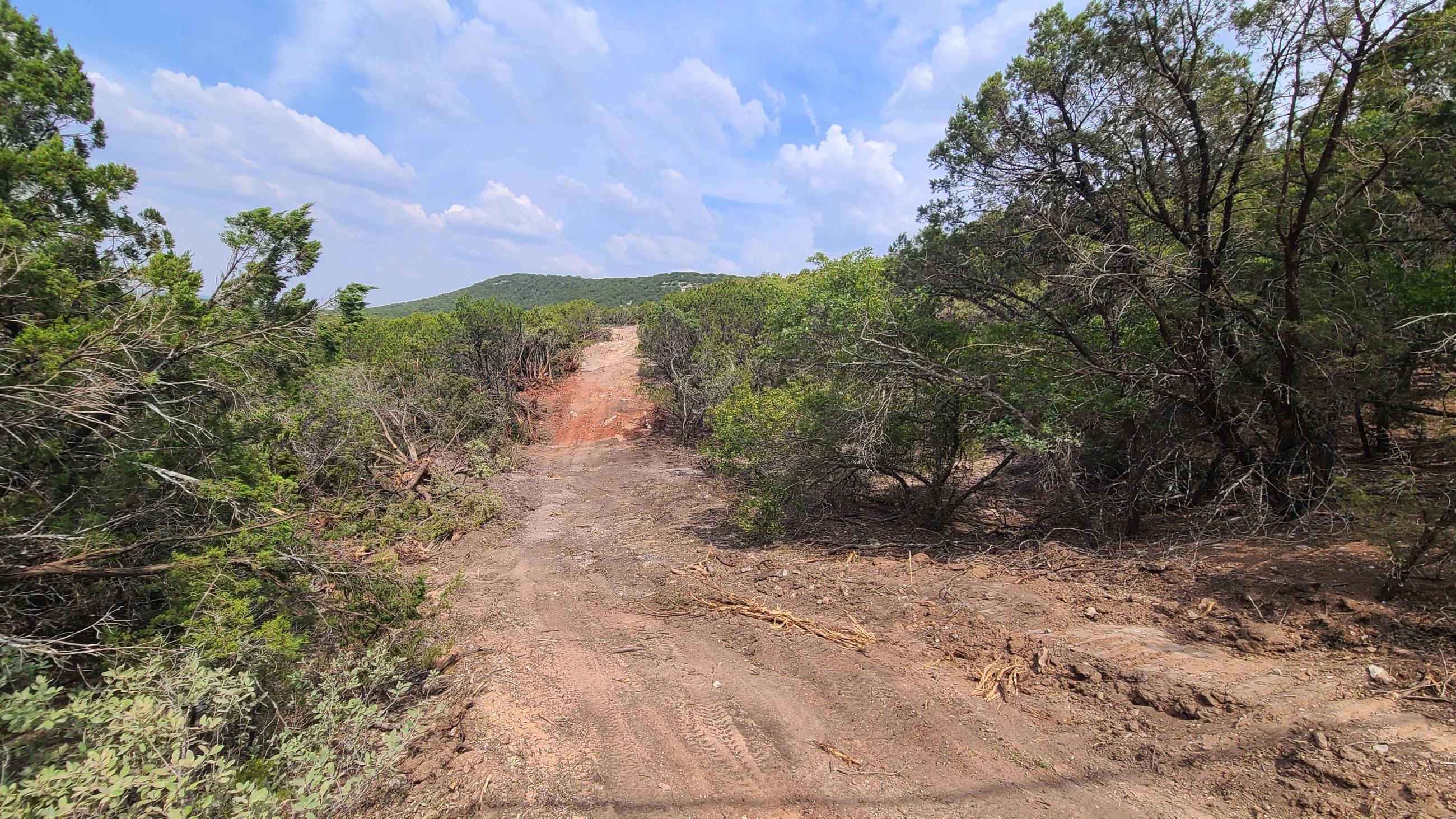
In the battle to prevent the spread of wildfire, containment lines are installed by fire crews using heavy equipment whenever possible. The containment line seen here is approximately 30 feet wide. These wide swaths cut through the vegetation to bare, mineral soil are typically sufficient to stop the spread of low intensity fire. Additionally, during suppression efforts, the lines provide fire crews the room they need to access the fire safely; install water hoses, called hose lays; or serve as targeting lines for aerial support.
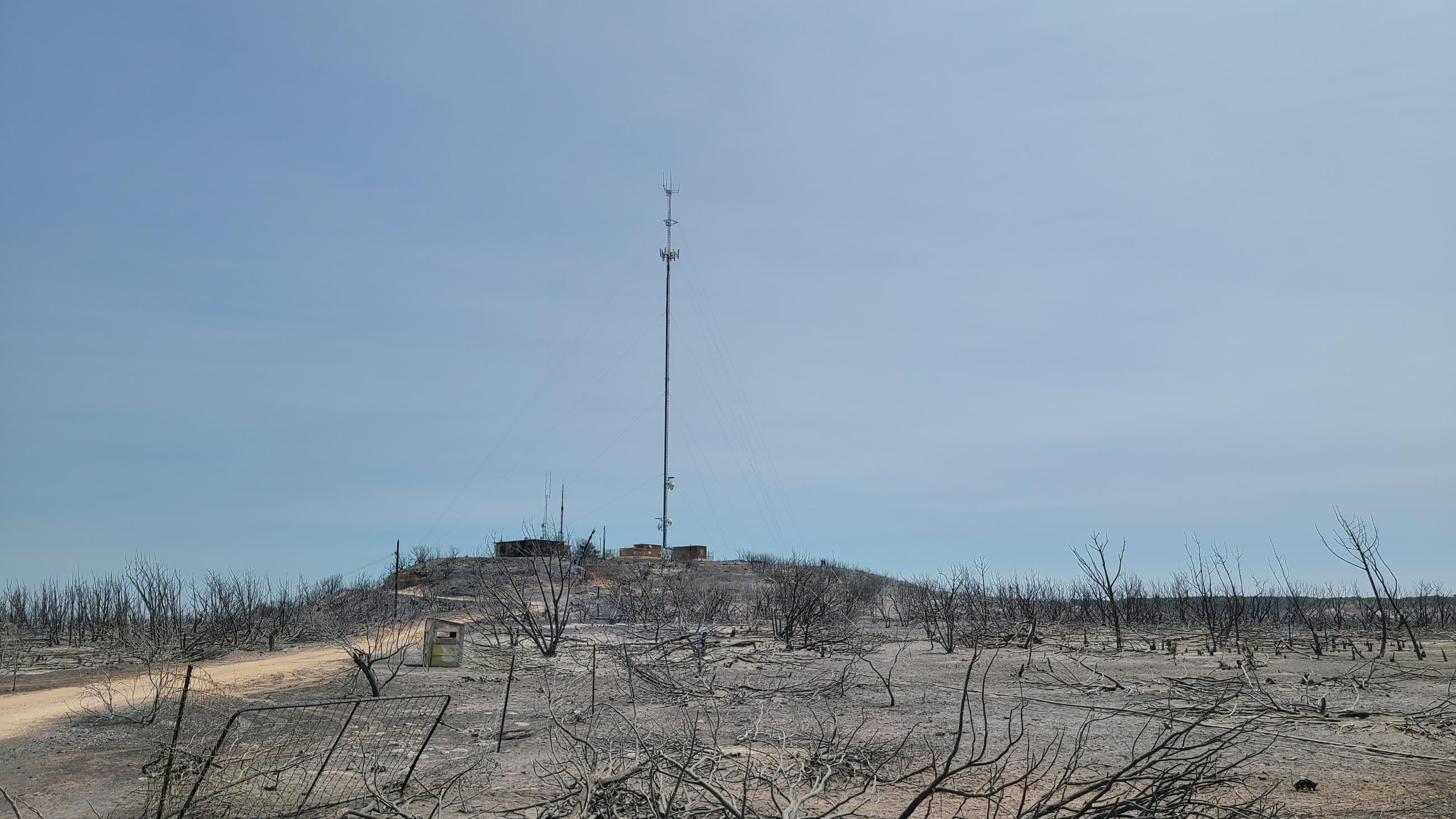
In this picture, the devastation of the fire is put into perspective with the abandoned radio station on top.
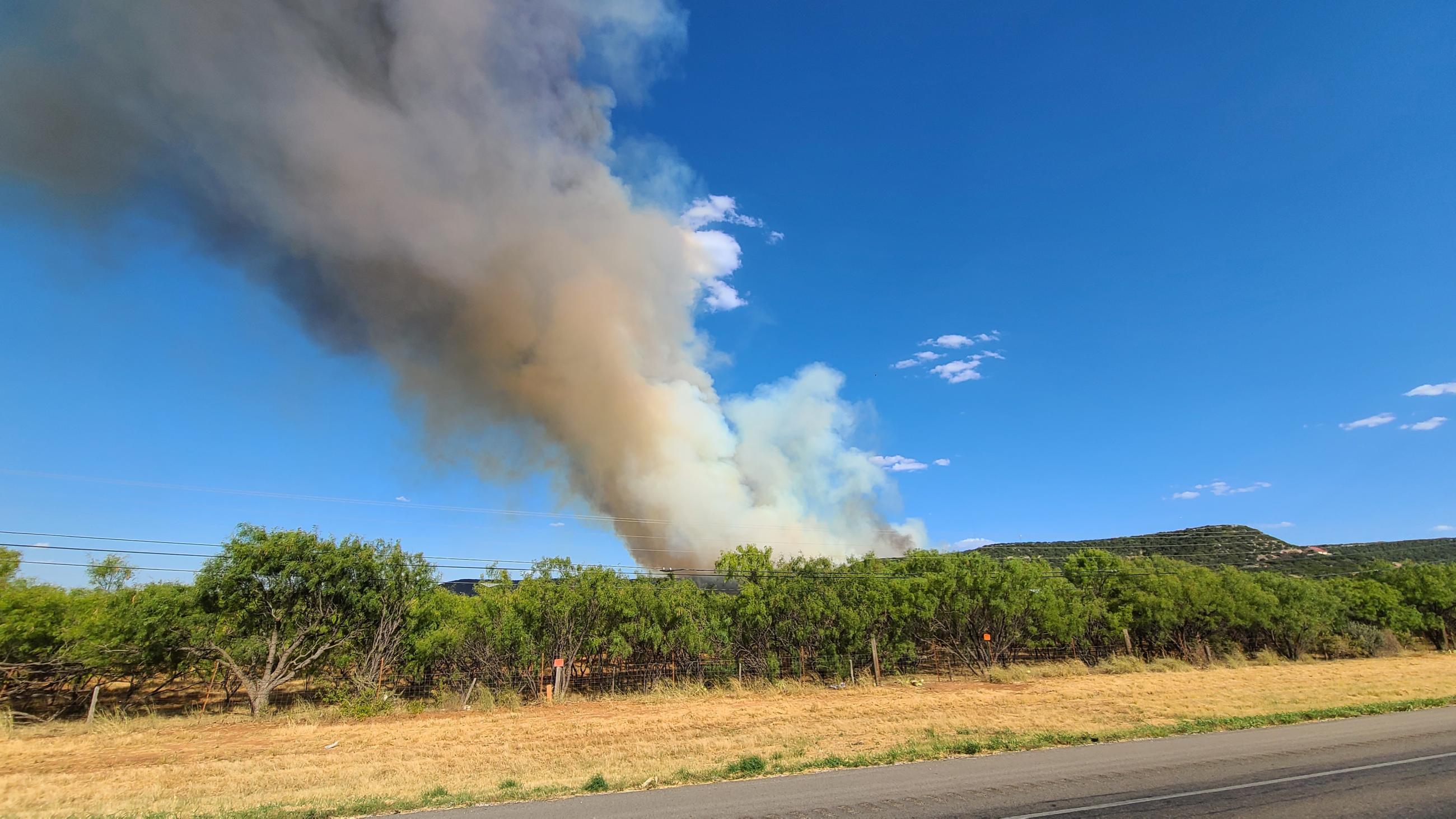
Plume of the Hill Top Fire as seen from Hwy 83/84 as of 5:41 PM on August 18th
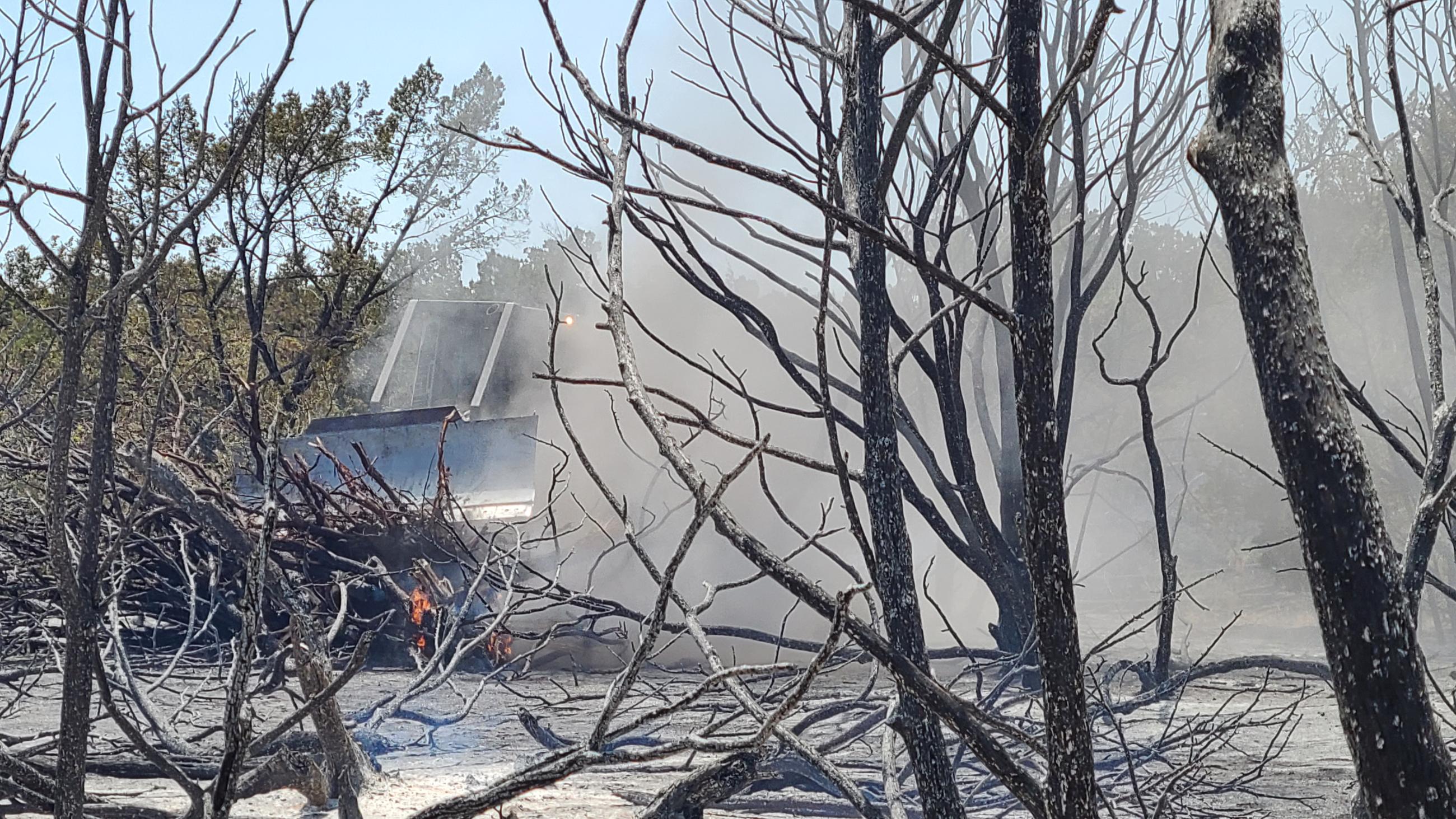
Bulldozers, or "Dozers" in fire terminology, are used to construct containment lines whenever possible. In this photo a smaller dozer belonging to the Florida Gold Team, who assumed command of the fire on August 19th, is pushing burned debris into the "black," or burned area. This is important, because occasionally some of these burned branches and/or trees can still have embers that could ignite a fire in the "green," or unburned area.
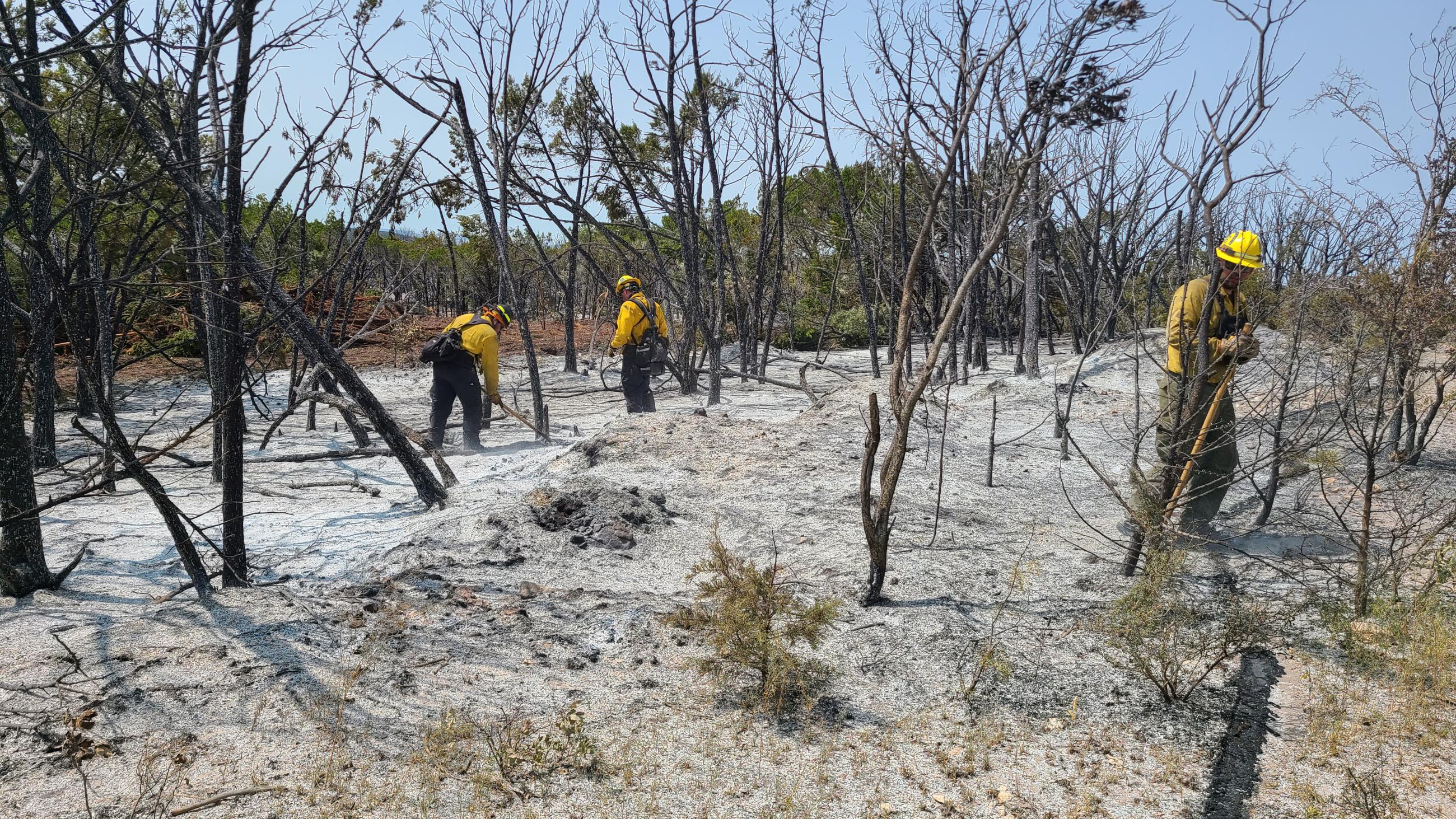
Firefighters are mopping-up hot-spots 3 chains in, or approximately 200 feet, from containment lines using hand tools and engines.

"When water just ain't enough!"
Chemical retardant is deployed to slow or stop the spread of fire during periods of extreme fire behavior. You'll notice the pink cast to the stone in this picture compared with the white truck in the background. This is the retardant that was dropped by a LAT, or Large Air Tanker, during initial attack on 8/18.

The Hilltop Fire burned with such intensity that most vegetation was reduced to ash, resembling what firefighters refer to as a "moonscape."

 InciWeb
InciWeb